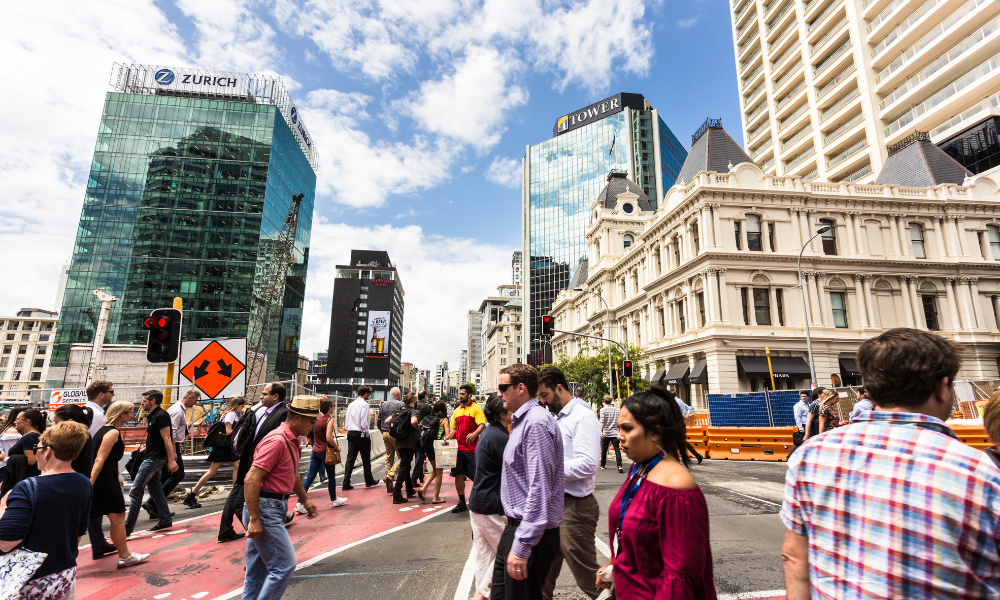Though challenging, next year may be easier than the downturn during GFC, economist says

Kiwi households would find a recession next year challenging, though it might be easier in many ways compared to the downturn during the global financial crisis, according to ASB’s chief economist.
In its December quarterly economic forecast, ASB tipped the economy to contract by 1% by the end of 2023, fuelled by falling household spending and declining building activity, as the construction sector struggles with surging costs in a cooling housing market.
By contrast, the economy shrank by 3% in the GFC.
“Regardless of whether we actually dip into a recession or not, the New Zealand economy’s going nowhere for a period of time,” ASB’s Nick Tuffley told Stuff. “Prepare now for a challenging 2023. Inflation is proving stubbornly high, and we don’t expect it will fall below the Reserve Bank’s 3% target ceiling until mid-2025. Non-tradable inflation, which is linked to domestic wage growth, is pushing up businesses’ operating costs and may continue to accelerate until the middle of 2023. To curb this wage-price spiral, we expect the Reserve Bank to press on with increases to the official cash rate, which we forecast to peak at 5.5% in mid-2023 and remain high for a year.”
That, as well as a decline in house prices, would impact spending, Tuffley said. ASB has predicted a peak-to-trough house price fall of 25%, or about 40% when adjusted for inflation.
Some households, he said, would be forced to reduce expenses while others would take a cautious approach.
“Discretionary purchases such as cars, appliances, and furniture are likely to be most affected after a retail boom in recent years, Tuffley said. “The Christmas mood is likely to be downbeat, spending patterns will change, and businesses in these exposed sectors need to be ready to adapt to changing customer needs.”
Unemployment, meanwhile, was expected to increase, with two-thirds of that due to population growth. More people would also miss out on work for a while.
“We’re not going to get mass layoffs, people getting into difficulties,” Tuffley said. “But on the flipside, there may be some people whose entry into the workforce is challenging.”
Some businesses, he said, would also be cautious about letting people go, particularly if they had found it hard to find staff in recent times.
“While times will be tough, some businesses are likely to want to hold on to staff rather than actively cut back,” Tuffley said. “Recruitment remains challenging at present, with some skills in short supply. Businesses will have an eye on ensuring they have the capacity and capability to manage through the eventual recovery.”
The ASB economist said a similarity with the GFC was the rise in interest rates, but the rates went higher then and the period over which they rose was much longer, Stuff reported.
“In the GFC, interest rates were going up from 2003 through to 2008 - we’ve had interest rates go up in a very short period of time,” Tuffley said. “My advice to New Zealanders is act now: don’t wait until challenges land at your doorstep to get on top of your finances. Take advantage of the help available from your bank to get your loan structure right and take a hard look at your spending and saving levels.
“Mortgage rates are likely to rise slightly further and remain elevated, so if your home loan is refixing in the next year or two, understand how your payments may change and budget for this scenario. Likewise, for businesses, especially those servicing the housing market, or reliant on discretionary consumer spend, be alert to your cashflow and changing consumer behaviour.”
A bright spot in the outlook was the return of international tourist dollars to New Zealand, although widespread worker shortages in tourism and hospitality would likely impede economic potential.
Before COVID-19 broke out, tourism was New Zealand’s largest export earner. Since the country reopened its borders, international visitor numbers surged, and air capacity and demand from Pacific Rim markets amped up, but the potential staff shortages could continue to hold tourism and hospitality back, Tuffley said.
“This is a sector that’s rising from the ashes and needs more people in the right places, particularly Queenstown,” he said. “In contrast to other areas of the economy, tourism may continue to face staff shortages, placing pressure on an industry that desperately needs a successful summer. Much will depend on the ability to attract staff from different regions, industries and even abroad. But even with the welcome return of international tourists, and a wave of international students in the new academic year, the outlook is for a tough 2023.”
It was still possible to avoid a recession though, Tuffley said.
“It’s all coming down to how quickly will capacity pressures ease,” he said. “Will they ease enough in the absence of having to really drag demand down so hard that we fall into recession?”
Tuffley said the Reserve Bank would be on the lookout for signs that wage growth was peaking.
“It could be that immigration does pick up much quicker than what is generally expected. It’s hard to know,” he said. “The figures do show some signs that the population inflow is stronger than initially expected – if capacity constraints are easing quite quickly the Reserve Bank might not have to push interest rates quite as hard.”
The pressure had been building at such a rate, however, that it would be tough to “sidestep” a recession, Tuffley said.
“At the very least, we have a period where it’s going to be pretty tough in a growth sense,” he told Stuff.
How are you preparing for a challenging 2023? Let us know in the comments section below.



